Surveys Suggest EV Owners Still Annoyed With Charging Infrastructure

There’s been an increase in reports of inoperable charging stations intended for EVs this year, with the data coinciding with J.D. Power’s annual Electric Vehicle Experience Public Charging Study. Despite EV sales continuing to climb, the survey showed that people are actually becoming less satisfied with charging stations overall.
"Not only is the availability of public charging still an obstacle, but EV owners continue to be faced with charging station equipment that is inoperable," elaborated Brent Gruber, executive director of global automotive at J.D. Power.
A survey of more than 11,000 battery electric and plug-in hybrid owners indicated that consumer satisfaction with Level 2 public charging declined from 643 to 633 last year on a 1,000-point scale. Meanwhile, the public’s satisfaction with DC fast chargers stayed roughly the same – though, at 674 out of a possible 1,000, there is certainly room for improvement.
The J.D. Power survey similarly revealed that around 20 percent of respondents were unable to charge their vehicle when visiting a station. That matches what we’ve seen from other studies, right down to the number-one issue being malfunctioning or completely inoperable chargers.
The industry is getting pretty deep into electrification at this stage. Even Dodge is floating a hypothetical all-electric replacement of the Charger this week to test if die-hard Mopar fans are willing to embrace simulated exhaust noises. That doesn’t mean there’s necessarily anything wrong with the concept Daytona SRT EV. But this is coming from a company whose current branding relies predominantly upon tire smoke and monstrous V8 engines producing oodles of power for less than you might expect. It’s actually kind of shocking to see Dodge consider getting rid of HEMI engines after they helped restore the brand’s identity.
Automakers see the upside of electrification (e.g. government subsidies, fewer regulatory fines, a leaner workforce, subscription-based features, service centers seeing less competition, etc.) and don’t want to be the last company to make the swap in the event that EVs end up dominating the market. That said, almost every company also seems to have overlooked the fact that the charging infrastructure remains their biggest obstacle. With electric cars typically having shorter ranges than their gasoline or diesel counterparts, customers are required to either charge at home overnight (a perk) or find a charging station out in the wild (not a perk).
Tesla made massive investments to build its own proprietary charging network. But most other companies don’t seem to want to make those kinds of commitments – often teaming up with the government, utilities, and private companies to get things done. For example, Volvo was one of the first global brands to announce a planned transition to an all-electric lineup. But the latest effort the company has made in regard to strengthening the EV infrastructure was to buddy up with Starbucks on a pilot program seeking to install “up to” 60 fast chargers at 15 Starbucks stores across a 1,350-mile route from Denver to Seattle. Starbucks will ideally see more foot traffic from EV owners that have to wait for their vehicle to charge and Volvo gets to look like it’s addressing the problem of there being an insufficient number of charging stations.
“We want to send drivers to where there are the amenities that they expect — a clean restroom, a snack, a well-lit parking lot," Tripi told Automotive News in a recent interview. "Who better to do it with than Starbucks, given their footprint?"
I guess Tripi hasn’t been to a Starbucks bathroom recently. Changes in policy have made hitting one up a test of one’s good fortune. But the company has recently decided to make them less public in the hope that patrons don’t lose their appetite after stopping to relieve themselves. Gross bathrooms or not, Volvo probably just wanted a business that could share the burden of installing and maintaining EV charging stations and had a good sense of where its customers tend to go already – Tripi even hinted at that during the interview before making an incredibly important point.
"Installing fast chargers is an expensive investment," he continued. "We need to ensure that there's value in it."
Automakers have been dumping billions into developing all-electric vehicles, so tossing billions more into building the supporting infrastructure may not be all that appealing at this juncture. The financial risk posed if the EV market implodes is absolutely massive. However, ignoring the matter seems short-sighted if brands like Volvo actually want to sell EVs. Tesla gained a lot by establishing its own charging network and conveying to its customer base that they could have faith in the company because it was actually putting all the pieces into place for electrification to happen. Its charging stations also seem to have a better reputation for uptime, perhaps because Tesla has so much skin in the game already.
Truth be told, the J.D. Power survey is fairly kind to the industry. Despite EV owners complaining that broken charging stations are routine, overall satisfaction still managed to stay above 60 percent. By contrast, a recent CDK Global survey found that 60 percent of respondents reported concerns about charging network availability, with almost half saying they’d wait till they had a garage to buy an EV due to concerns with public charging. In Europe, energy rationing has also become a concern. Some are wondering if “smart meters” that give utilities and the government the ability to throttle power usage could spell trouble for electric vehicles.
But it’s hard to get a wealth of reliable data on the public perception because the world has been inundated with reports from EV manufacturers, lobbying groups, and the companies building the charging stations. Here’s one from Plug In America claiming EV drivers just love their cars and that 90 percent plan on getting one as their next vehicle. But even that survey still failed to avoid just how annoyed most people are with the modern charging infrastructure.
I anecdotally fall into the majority here and have a sneaking suspicion that most EV advocates rarely drive themselves long distances. Unless you have a penchant for combustion-engine vehicles or live in an extreme climate, electrics work well enough for most daily duties. But taking one for a prolonged road trip exposes you to the plight of charging stations. Sometimes the only thing to complain about is the minutes lost while the vehicle takes to move electrons. But encountering a bad charger seems an inevitability based on the current condition of most stations and you don’t always know that there’s been a problem until you’ve returned to the vehicle to check. This absolutely has to be addressed by the industry if manufacturers seriously expect EVs to supplant gasoline-driven automobiles.
[Image: VisualArtStudio/Shutterstock]
Become a TTAC insider. Get the latest news, features, TTAC takes, and everything else that gets to the truth about cars first by subscribing to our newsletter.

A staunch consumer advocate tracking industry trends and regulation. Before joining TTAC, Matt spent a decade working for marketing and research firms based in NYC. Clients included several of the world’s largest automakers, global tire brands, and aftermarket part suppliers. Dissatisfied with the corporate world and resentful of having to wear suits everyday, he pivoted to writing about cars. Since then, that man has become an ardent supporter of the right-to-repair movement, been interviewed on the auto industry by national radio broadcasts, driven more rental cars than anyone ever should, participated in amateur rallying events, and received the requisite minimum training as sanctioned by the SCCA. Handy with a wrench, Matt grew up surrounded by Detroit auto workers and managed to get a pizza delivery job before he was legally eligible. He later found himself driving box trucks through Manhattan, guaranteeing future sympathy for actual truckers. He continues to conduct research pertaining to the automotive sector as an independent contractor and has since moved back to his native Michigan, closer to where the cars are born. A contrarian, Matt claims to prefer understeer — stating that front and all-wheel drive vehicles cater best to his driving style.
More by Matt Posky
Latest Car Reviews
Read moreLatest Product Reviews
Read moreRecent Comments
- MaintenanceCosts "And with ANY car, always budget for maintenance."The question is whether you have to budget a thousand bucks (or euro) a year, or a quarter of your income.
- FreedMike The NASCAR race was a dandy. That finish…
- EBFlex It’s ironic that the typical low IQ big government simps are all over this yet we’re completely silent when oil companies took massive losses during Covid. Funny how that’s fine but profits aren’t. These people have no idea how business works.
- Ajla Goldman Sachs 🥂
- Rna65689660 DVR and watch all that are aired. Has been this way for 40 years.

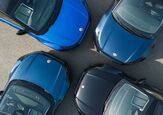
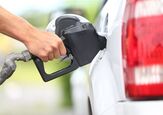














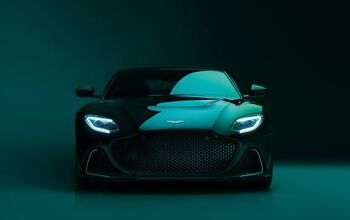






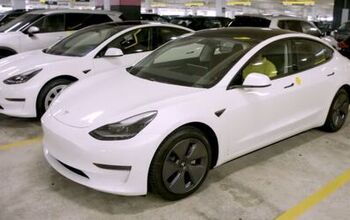
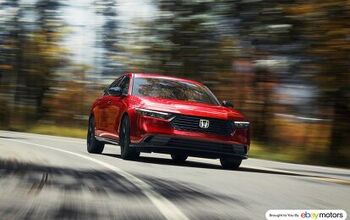


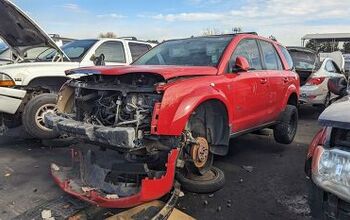





Comments
Join the conversation
I've had my Volt for going on 6 years now. Which of course is My DD. I completely understand the ups and downs of an EV, especially in cold weather climates. I really don't care about your driving habits because they are not my driving habits. As I said before, EV's in their current state are not replacements for ICE powered cars and light trucks. No matter how much you would like them to be. They can be a great choice as a 2nd or 3rd vehicle in a multi-car household.
Plug-in hybrids are likely the better fit for most.